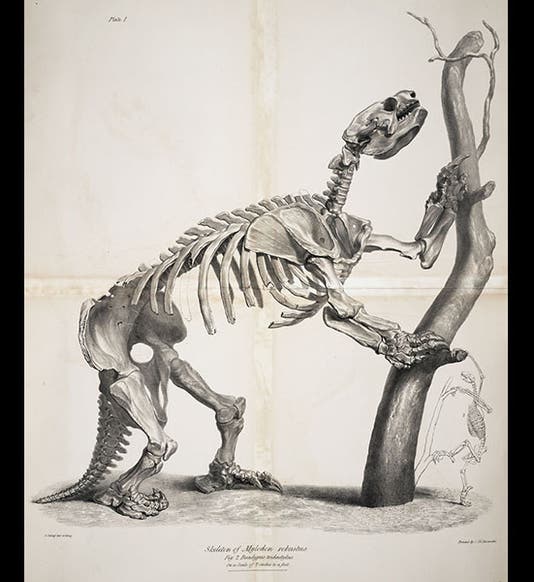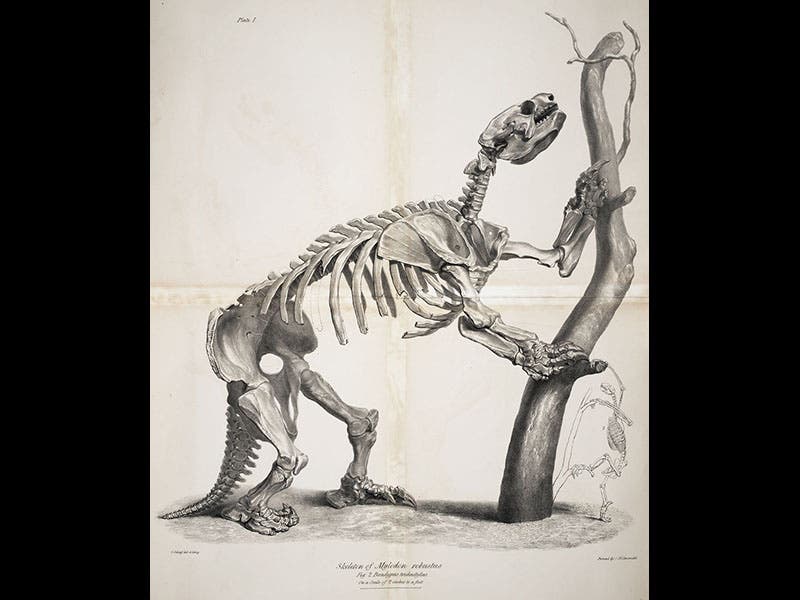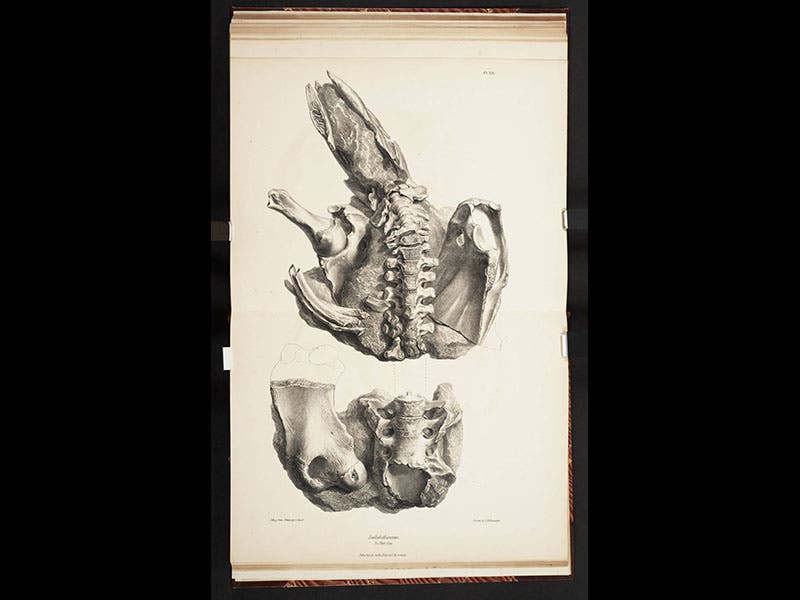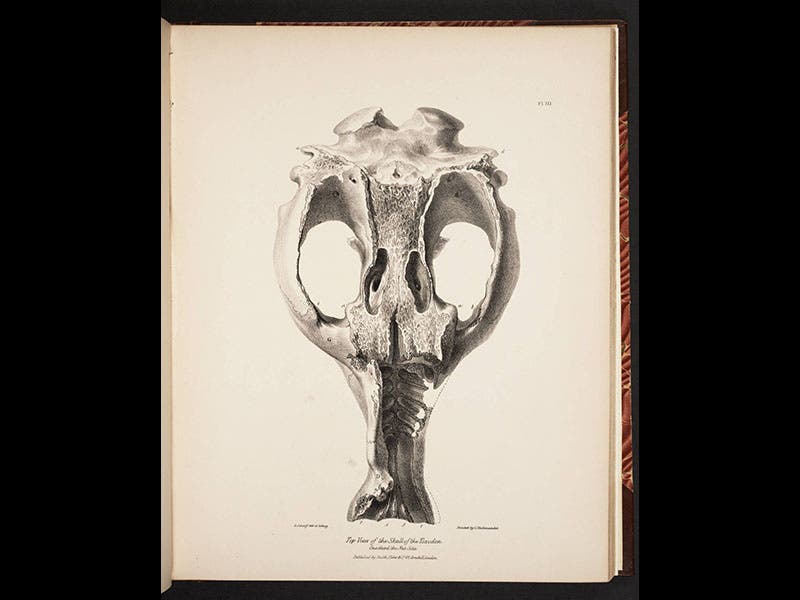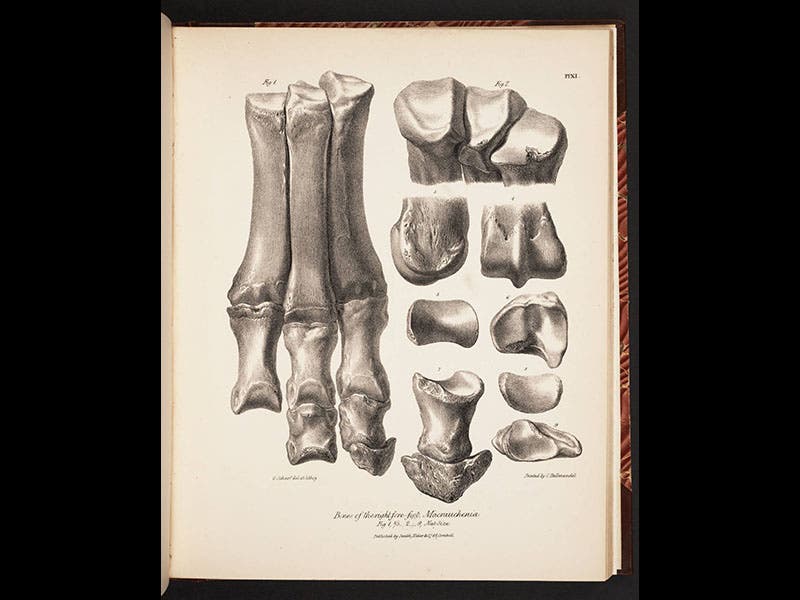Scientist of the Day - Richard Owen
Richard Owen, an English anatomist, was born July 20, 1804. Owen was a brilliant paleontologist, the English heir to the great Georges Cuvier in France. When Charles Darwin returned from the Beagle voyage in 1836 and was looking for someone to identify and describe the mammal fossils he had brought back, he settled on Owen, and he couldn’t have made a better choice. Owen recognized several of the remains as those of Megatheria and their relatives, large ground sloths that had been first identified by Cuvier. One of these, consisting of a lower jaw, was named Mylodon by Owen (second image); another he called Scelidotherium, or “femur-beast” (third image).
Owen realized that some of Darwin’s specimens represented entirely new orders of mammals. One of Darwin’s specimens was an enormous skull; Owen named it Toxodon and described it as a hippopotamus-sized, rodent-like creature (fourth image). Another was named Macrauchenia by Owen, and he reconstructed it as a large, hump-less, camel-like beast (fifth image). Both Toxodon and Macrauchenia disappeared at the end of the Pleistocene.
Owen wrote the fossil volume of Darwin’s 5-volume Zoology of the Voyage of the Beagle (1839) and included all of the lithographs seen above (except the first), and added in a folding plate of the Toxodon skull that is life-size, which means about 4.5 feet in height (sixth image). We displayed this volume in our Grandeur of Life exhibition in 2009, opened to the smaller Toxodon skull. The life-size Toxodon skull lithograph was simply too large to fit into any of our exhibit cases!
Several years after the publication of Zoology Fossils, Owen obtained an entire skeleton of Darwin’s Mylodon, which prompted Owen to compile a monograph on this giant ground sloth (1842). Its first plate is one of the finest fossil images of the entire century, with a tiny living sloth in outline providing a scale reference for the extinct animal (first image).
The National Portrait Gallery in London has no less than 34 portraits of Sir Richard, most of them depicting him as an older man. This oil painting by Henry Pickersgill (ca 1845) is the closest we can come to presenting the Owen of the Mylodon years (seventh image).
Dr. William B. Ashworth, Jr., Consultant for the History of Science, Linda Hall Library and Associate Professor, Department of History, University of Missouri-Kansas City. Comments or corrections are welcome; please direct to ashworthw@umkc.edu.

